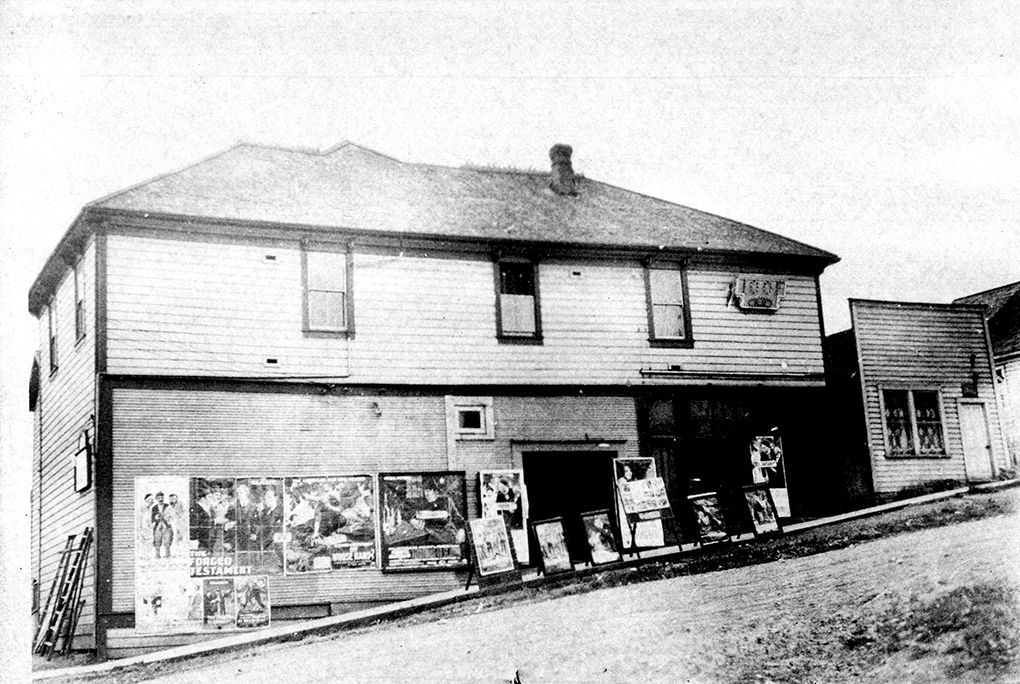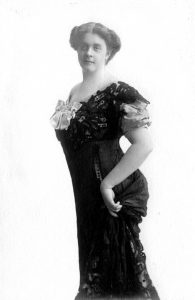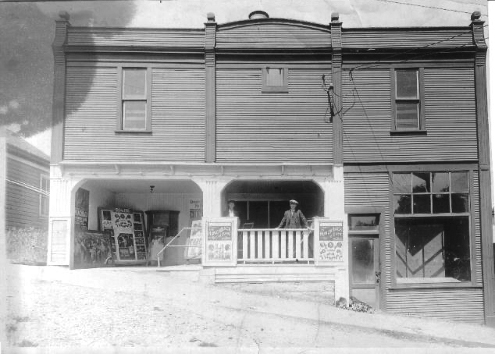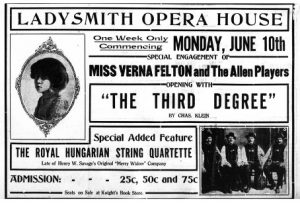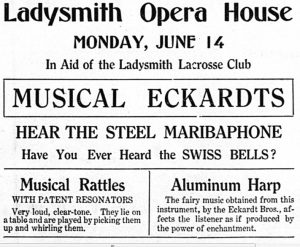Stars of the Stage in Early Ladysmith
Between 1902 and 1912, Ladysmith was ‘on the circuit’ and saw more live international musical events than it does today! Many famous musicians and singers from Norway, Scotland, Ireland, England, Hungary and various parts of the U.S. stopped in Ladysmith as part of ‘world tours’ which saw them performing across North America, Europe and Australia.
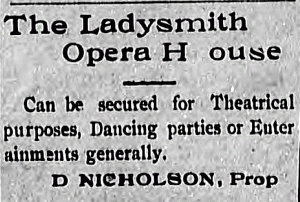
Advertisement offering the Ladysmith Opera House for rental for various types of events, December 13th, 1904.
The Ladysmith Opera House opened in 1902. It hosted concerts, plays, formal dances, movies and – to keep the venue occupied – basketball games and boxing matches!
Some performances were superb. The very famous soprano Madame Freed-Griselda gave a concert in the Opera House in 1905. According to the local paper, “those present enjoyed a vocal entertainment superior by far to any previously given in the smelter city [Ladysmith]. Criticism was impossible, and applause but insufficient evidence of appreciation…”
Miss Olivia Dahl, a stunning Norwegian mezzo-soprano opera singer who performed at the Opera House on June 21st, 1906, was, according to the Ladysmith Daily Ledger, “…one of the greatest singers who has ever visited Vancouver Island.” She had come up from San Francisco, having just experienced the great earthquake there.
On the other hand, some performances were awful. The Ladysmith Chronicle, after a performance of George M. Cohen’s “Forty-Five Minutes to Broadway” in 1911, stated, “The performance at the Opera House on Thursday evening could not have been worse.”
Of course, not everyone in early Ladysmith liked Opera.
For them, there was a wide variety of less highbrow entertainment. Performances included operetta, vaudeville, minstrel shows and choral concerts featuring popular songs. One peculiar show, by The Musical Eckardts, featured somewhat unusual instruments – the marimbaphone, musical rattles with patent resonators and an aluminum harp.
Venues
In addition to the Opera House, performances were held in a variety of venues in the town, which included Gould’s Hall on the Esplanade, various association halls and the Novelty, Gem and Lyceum theatres. The Gem had a seating capacity of six hundred and a large stage which could accommodate any travelling company. Performances by local musicians accompanied silent movies of the era and were played between shows and during the movies themselves.


